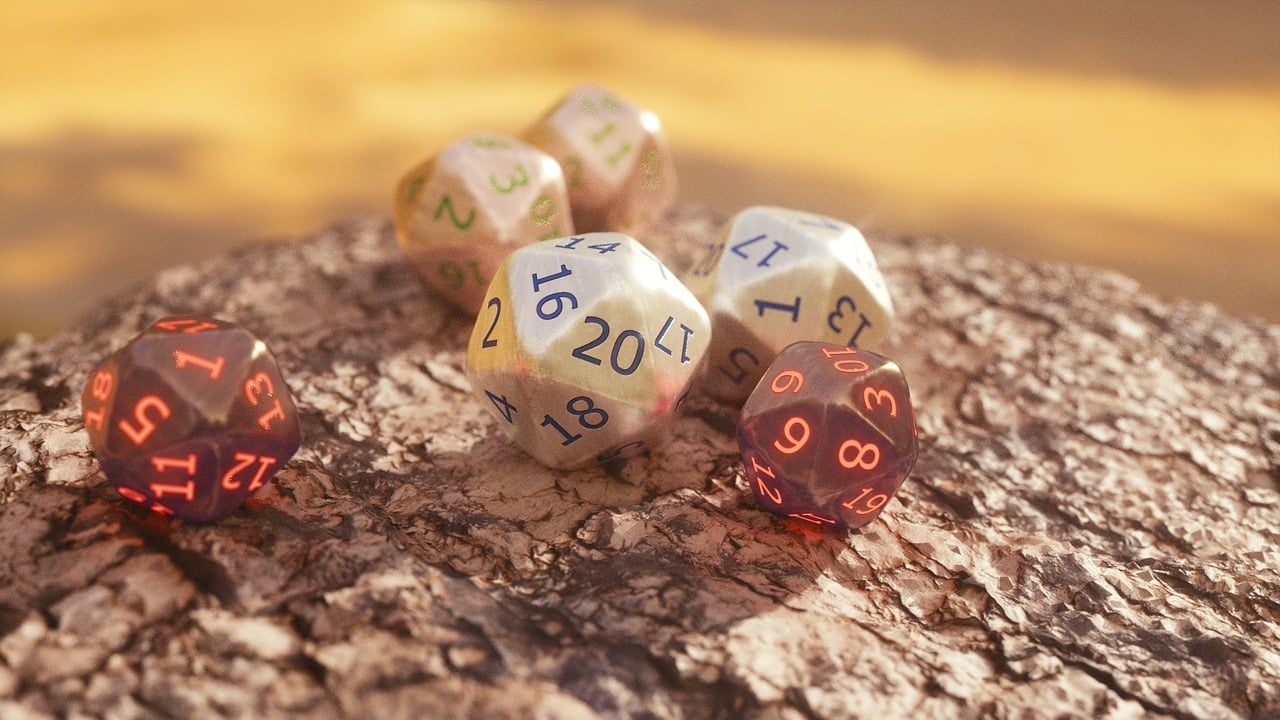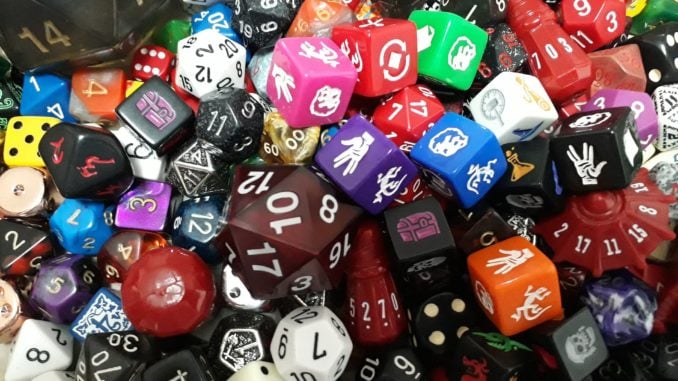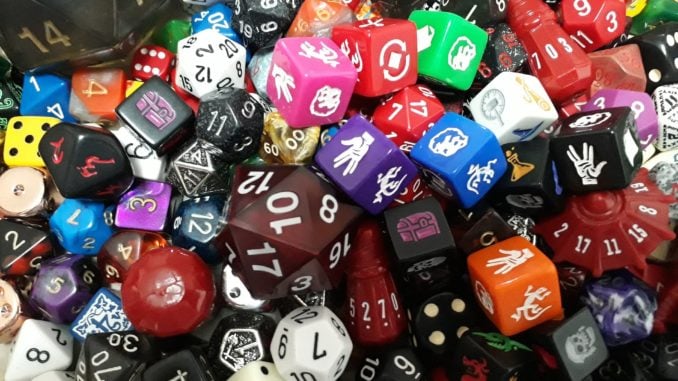Battle Master 5E Guide | Rules, Tips, Builds, and More
The Player’s Handbook introduced three Fighter archetypes, and one of them seems like it’d be more at home in a supplement book. The Battle Master looked at the Champion and decided that it was done with the Fighter’s normal MO. They are leaders on the battlefield, and view it as an almost mathematical puzzle. Enemies that they see are simply obstacles that can be overcome with creativity and guile. Historians, musicians, and artists clamber around this roll, and become well-rounded fighters of incredible ability. Can dungeons be viewed in the same light as the battlefield? Let’s find out in our Battle Master 5e Guide.

Table of Contents
Perfect Your Strikes: Battle Master 5E
The Battle Master attempts to inject some casting finesse into the Fighter class without making them casters. Reliant on the Attack action, most Battle Masters become frontline DPS or Defender roles. Even Defenders get great damage out of their Combat Superiority ability, and the Fighter becomes a really good source of crowd control. Unfortunately, Combat Superiority doesn’t scale too well with multiple attacks for this fighter subclass, and the ability is balanced out by a lot of mediocre stuff.
Combat Superiority
This is the bread-and-butter of the Battle Master, the whole reason you took this class. It’s pretty great! You start with 3 Maneuvers, and learn two more at 7th, 10th, and 15th levels, for a total of 9. Also, you can also replace old maneuvers (great if you find artifacts and want to synergize things!).
You use Superiority Dice in order to use a Maneuver; you start with four d8s in your pool, and regain all of them on a short rest. At level 7 and 15, you gain another one, for a total of 6 dice.
Some Maneuvers ask for a save. If so, you use either Strength or Dexterity (up to you) on top of the normal 8 + proficiency. The Maneuvers are listed below.
Maneuvers
- Commander’s Strike: Not a bad option. If your Barbarian is raging, then their attack will likely hit harder than one of your weapon attacks. And if you have a Rogue, this can allow them to get two Sneak Attacks in a round, since Sneak Attack is turn-oriented. Make sure your party comp can support this.
- Disarming Attack: Pretty great against humanoid opponents; it can completely negate an enemy’s turn. Make sure to coordinate with allies and have them kick the weapon away.
- Distracting Strike: Combining a Help action into an Attack. Great, efficient action economy. If you have heavy hitters or a Rogue, this is almost a must-have.
- Evasive Footwork: This theoretically lets you save an Action to avoid Disengaging. However, similar to Bard colleges like Valor, you could roll a 1. That means you’re only adding 1 to your AC against the free attack your opponent is making. Risky. You’re better off using the Disengage action and saving your dice. Or using Pushing Attack to just make the enemy not be there anymore.
- Feinting Attack: This gives you advantage as a Bonus action. Fighters don’t really need advantage, since they swing so many times by level 11. Still, getting that advantage can be useful for increasing your damage potential, especially with the Great Weapon Master feat. One of the best options, in general.
- Goading Attack: This attempts to turn the Battle Master into a Defender role. Unfortunately, like many Taunt effects in 5e, the enemy’s DC-based spellcasting is not affected at all. In addition, Menacing Attack applies disadvantage on all attack rolls, ability checks, and restricts movement. If you want to take this as a backup to Menacing Attack, it’s still great. The GM should have your enemy consider you as more threatening if they use this, and potentially target you with spells as well.
- Lunging Attack: Increase your reach by 5 feet. 5. There will be situations where this is quite useful, allowing you to barely hit an enemy. However… just walk closer. Please. This isn’t worth a Maneuver known.
- Maneuvering Attack: Expending an ally’s reaction isn’t gonna win you many thanks, but moving a melee ally somewhere good? That’s… not gonna be super important. This has good uses, but you can usually save lives with something like Pushing or Trip attack. If you’re using Flanking rules, this’ll become more useful.
- Menacing Attack: Frighten is a devastating debuff. Disadvantage on literally everything except saving throws is gonna put a wrench in most plans. Use this on a threatening melee combatant and become the wall your party needs.
- Parry: This is a defensive use of your superiority dice, but there’s a major upside. Reducing damage by even 1d8+Dexterity reduces the amount of healing your Cleric needs to use. Do remember; even if you reduce damage to 0, it still counts as a hit. That goes for most poison or effects like Trip.
- Precision Attack: This makes your attack extremely accurate, and you can apply it to the roll after you attack. Good for that final push up to your enemy’s AC. However, if you want this, you’ll likely prefer Feinting Attack. That adds a bonus to damage and makes you more accurate. This is a better use of Superiority dice purely for accuracy, however.
- Pushing Attack: This gives you a Shove on top of your attack. In some situations, that’ll be super good! In most, that doesn’t really matter that much. If you really, really want to try a shove build… you could do worse.
- Rally: Rally is hard to use. Charisma on a Fighter? Heresy. If you want to be the face of your party (for some reason), then this’d be a good, flavorful choice. And hey, that’s not a bad pile of Temp HP if you can raise your Charisma high enough. Still, don’t jeopardize the build just for a tiny bit of HP.
- Riposte: Pretty great way to get an extra attack per round. If your AC is fairly high and you’re pretty sure you can take the opponent out with just one or two hits, then you get your chance. Then you can refocus on another enemy.
- Sweeping Attack: Fighter with AoE? Amazing! Just kidding. This is a stupidly small amount of damage, and most Maneuvers add Superiority to damage and get another effect. Don’t sacrifice utility for the semblance of AoE.
- Trip Attack: Similar to Pushing Attack, but knocking Prone is great for melee combatants. This gives any number of allies advantage on attacks… but it gives the enemy a saving throw. If you want a riskier source of advantage, this is for you. Otherwise, consider Distracting Strike.
Combat Superiority is absolutely fantastic, since it gives the Fighter combat control. You get so much extra damage, utility, and options out of this ability. However, you really need to keep an eye on your Superiority pool. 6 dice may sound like a lot, but when you get 4 attacks per turn, you’re gonna be burning through these so fast. If your team is good with taking short rests, you’ll be in a really good spot. Choose your time to Maneuver well.
Student of War
The Battle Master also gets a flavor ability.
At 3rd level, you gain proficiency with one type of artisan’s tools of your choice.
The best you can typically get out of artisan’s tools is some copper pieces in a bougie town for selling sketches and stuff. However, that’s not to say artisan’s tools are useless. With a creative enough mind, you can actively use your proficiency. Maybe a Dragon’s a huge fan of paintings of themselves, or the cultist needs a speechwriter, and you use calligraphy tools to infiltrate them.
Not super useful, but a creative Battle Master might find a reason for this to exist.
Know Your Enemy
At level 7, you get a somewhat metagaming ability that the Mastermind rogue would eventually do a little better. After 1 minute of looking at someone, you get to learn things about the target. You learn if the target is your equal, inferior to you, or superior to you in two of the following scores of your choice.
- Strength score
- Dexterity score
- Constitution score
- Armor Class
- Current hit points
- Total class levels, if any
- Fighter class levels, if any
This is… situational, but okay. You have a lot of options to choose from, and the correct uses of this ability can get you somewhere. Say, for example, you are at a bar and are talking to a Halfling. You decide to use this ability to look at their Strength and Hit Points, and find out that they’re actually as strong as an ogre. That might be someone to look into! Or, you’re at a party, and learn that the Lord you’re talking to is Superior in both Total Class levels and Hit Points. That might mean they’re not actually as innocent as they seem – maybe they’re the vampire!
If you’re catching a Boss in a monologue, consider checking their Armor Class and Strength/Dexterity to see how hard they’ll be to hit…. and how hard they’ll hit. If a super-strong bad-guy has lower Strength or Dexterity than you, then they’ll be a caster.
This is your best out-of-combat ability, and it’s flavorfully fantastic. But it’s super hard to use and doesn’t tell you much. Not bad for a social situation.
Improved Combat Superiority
This ability is somewhat strange, since it’s Combat Superiority… but down here. Oh well!
At 10th level, your superiority dice turn into d10s. At 18th level, they turn into d12s.
All Maneuvers use your superiority dice in some way. Most of the time, it just adds to damage. This ability increases the damage of your Maneuvers by an average of 1. Twice.
That’s… okay. Not great, just okay.
If this ability said “increase your damage by 1 at level 10 and 18,” then it’d be about the same as this. However, that wouldn’t be nearly as satisfying! When you roll max on your superiority dice now, you’ll feel like a god amongst men. And don’t even get me started on crits!
Larger superiority dice also lowers your chance to roll a 1 (technically), so that’s good. Especially if you want to take Evasive Footwork or Precision Attack for those Hail Mary moments.
Relentless
At level 15, you get a really good reason to expend your dice rather quickly.
Starting at 15th level, when you roll initiative and have no superiority dice remaining, you regain 1 superiority die.
Theoretically, this gives you an infinite supply of superiority dice. So much for my complaint!
You probably shouldn’t spend all 6 maneuvers on the first combat of the day, or the rest. That’d be overdoing it. Maybe split it into 3 and 3, and then let Relentless keep you afloat until you do rest.
You’ll want to take a Short Rest before any extremely important conflict, so you can maximize your damage and minimize your enemy’s will to exist. That means Relentless is just here to allow you to coast your way to the finish line.
In parties that desperately want to rest, you’ll be happy, but Relentless might not be. In those cases, feel free to spend 4 maneuvers in an Attack Action and just absolutely crush someone.
Best Race for Battle Master Fighters
Battle Masters are particularly well-suited for frontline roles, but they don’t say whether Finesse is worse. If you’re wanting to just hit them really hard, go Strength. If you want Defender possibilities, consider Dexterity, and go with the Dueling Fighting Style; you can wield a shield with Dueling, and thus really increase your damage potential while protecting yourself. If you decide to go melee, consider buffing Constitution up. The only Mental stat that the Battle Master even mentions is Charisma for Rally… and that’s probably not worth the pick-up.
Dragonborn (Standard or Ravenite)
Dragonborn are one of the basic races of 5E, and are rather good at melee combat. If you choose a default Dragonborn, you gain a +2 to Strength and +1 to Charisma; not perfect, but that +2 Strength is superb! A Breath Weapon (especially a cone) gives the Fighter an Area of Effect. Gaining damage resistance against Cold, Fire, or Lightning is not a bad idea at all for a standard Fighter.
Ravenite Dragonborn from the Explorer’s Guide to Wildemount replace the Charisma for Constitution (perfect!), gain Darkvision, and learn Vengeful assault. Vengeful Assault lets you use your reaction to attack back once per short rest. As a melee-ranged fighter, you’re extremely likely to take melee damage. You could even do this with thrown weapons, if you really want!
Shadar-Kai Elf
This subrace from Mordekainen’s Tome of Foes are extremely potent amongst elves. +2 Dexterity and +1 Constitution is fantastic for a melee-centric elf. The Shadar-Kai are resistant to Necrotic damage – not bad for most campaigns, where you occasionally fight undead – and can teleport 30 feet once per day. Not as good as the fey elf, but you get better stats and necrotic resistance. Elves also gain so much good utility – Darkvision, Fey Ancestry, Trance, Keen Senses – that they only make sense as Battle Masters. Use that eternal age for your advantage!

Battle Master 5E FAQ
What is a Superiority Dice in 5E?
The superiority dice are the resources you use to fuel your maneuvers. This resource is central to your subclass, and they increase as you level up.
How Many Superiority Dice Can You Use Per Turn?
There is no hard limit on the number of superiority dice you can use per turn. However, you can only spend one die per maneuver for a single attack. That means there is an effective limit on the number of times you can use your dice.
Can You Use Know Your Enemy More Than Once?
There is no limit on the number of times you can use Know Your Enemy against a single target. This ability is only restrained by the amount of time you have, as it takes a full minute observing or interacting with that person to use Know Your Enemy.
Conclusion – Our Take on the Battle Master
That’s it for our Battle Master Fighter 5E Guide. The Battle Master is one of the best possible Fighters. You can build it in almost any way you want (though many maneuvers are melee-centric!), it has fantastic utility, and it goes far beyond “I walk up and Attack” that Fighters normally do. If you want to try a Fighter but are worried about them being too boring, become a Battle Master. You won’t be disappointed.






